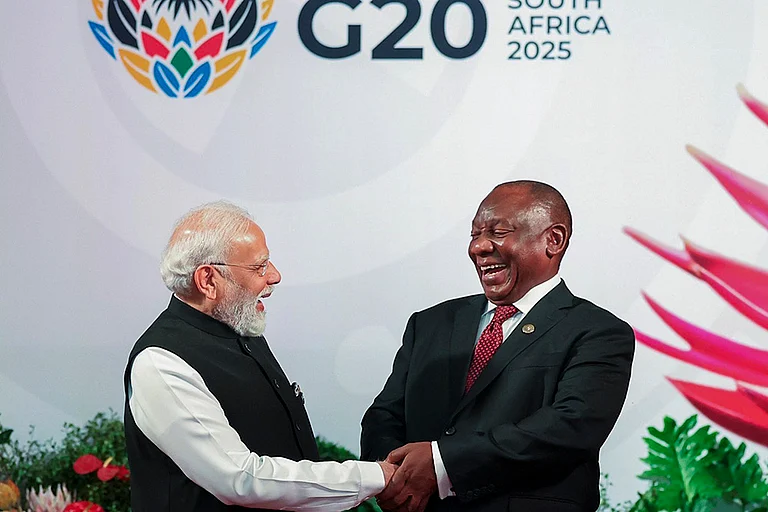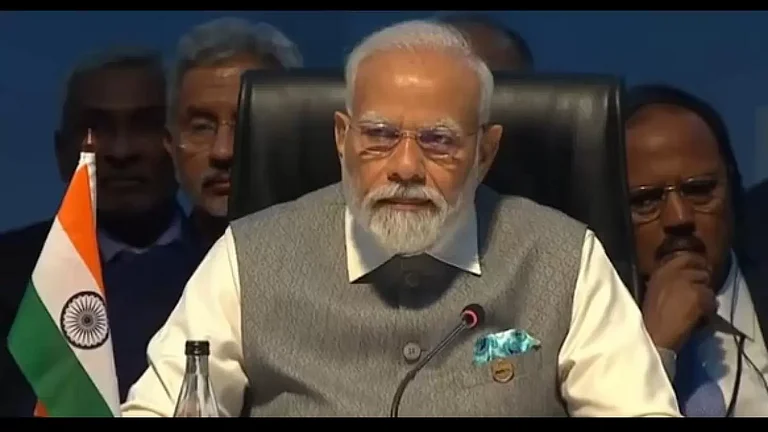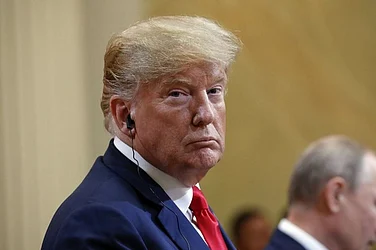
Over 40 African countries participated in Japan’s flagship Africa summit, TICAD-9.
TICAD-9 seeks to advance Africa’s regional integration and industrial development while expanding opportunities for Japan.
As Japan is heavily reliant on America, such initiatives represent the country’s diversification strategy.
Japan’s flagship Africa summit, TICAD-9, concluded in Yokohama on August 22 with the participation of representatives from more than 40 African countries, including about 30 heads of state or government. Like the past few TICAD meetings, the focus was not on new pledges of Japanese Official Development Assistance (ODA) but on promoting private sector engagement. While questions remain over whether TICAD can serve as an effective counterweight to China’s Belt and Road Initiative (BRI), this edition revealed developments of particular significance to India.
A New Indian Ocean–Africa Economic Region
Prime Minister Ishiba used two occasions on August 20, the opening of TICAD-9 and a parallel event hosted by a leading Japanese newspaper, to propose an “Indian Ocean–Africa Economic Region.” The initiative seeks to link Japan with India, West Asia, and Africa across the Indian Ocean. It dovetails neatly with Japan’s Free and Open Indo-Pacific (FOIP) vision. It seeks to advance Africa’s regional integration and industrial development while expanding opportunities for Japan and its partners.
Japanese officials argue that such a framework could become a new driver of global economic growth. Acknowledging the economic significance of Japan’s partnerships with India and West Asia creates a bridge toward structured engagement with Africa. It also offers Japanese companies and African partners a platform for collaboration beyond conventional aid, giving Tokyo a strategy that simultaneously supports African growth and its own economic revival.
For Japan, which remains deeply reliant on the United States as its primary partner, such initiatives also represent a diversification strategy. At the same time, they reflect confidence in the India–Japan partnership, which has grown steadily and is expected to gain further momentum with Prime Minister Modi’s forthcoming visit. Tokyo is also rediscovering trilateral cooperation models. A 2019 Confederation of Indian Industry (CII) report on India–Japan–Africa partnerships had outlined the potential of such frameworks. TICAD-9 now provides renewed impetus for this matrix, situating Africa within the larger Indo-Pacific canvas.
Connectivity Corridors and Critical Minerals
Japan’s infrastructure presence in Africa remains limited compared to China, which has built or financed over 40 ports. Yet Tokyo is gradually outlining a strategic connectivity agenda. Key corridors under development include one linking Mombasa to Uganda and the Great Lakes region, another stretching inland from Nacala in Mozambique to Malawi and possibly Zambia, and a Tanzanian corridor connecting to northern Zambia and the southern Democratic Republic of Congo. These routes target both trade and access to resource-rich regions, particularly in mining.
Through such projects, Japan aims to leverage the Indian Ocean as a highway of commerce connecting Africa with India and Japan. The long-term vision is not just about ports and railways but also about embedding Africa into critical mineral supply chains. A “China-plus-one” strategy is emerging, where Africa provides raw materials, initial processing is undertaken locally to add value, further processing occurs in India, and Japanese industries consume the refined products.
This model could be especially relevant for semiconductors, electronics, and solar panels, sectors in which Japan has major interests and India is building manufacturing capacity. Japanese firms, long providers of processing technology to China, may now reorient their expertise into this trilateral framework. Discussions along these lines at TICAD-9 lent the summit a sharper strategic edge.
Indian Presence Beyond Governments
A distinctive feature of TICAD-9 was the visibility of Indians in Africa-related conversations. Unlike earlier summits where Indian officials advocated for trilateral cooperation, this time Indian companies already active in Africa and professionals of Indian-origin working with African firms were present. They sought partnerships with Japanese corporations, which were more receptive given the success many Indian-origin enterprises have achieved on the continent.
This “Indian presence” was notable for being rooted in African realities. It underlined how Indians in Africa can act as natural bridges, making trilateral cooperation less of a diplomatic construct and more of a business-driven reality. For Japan, which has often been cautious in engaging Africa, the credibility of Indian businesses provides reassurance and practical entry points.
Avishkaar and the ODA Shift
Another breakthrough came with Japan International Cooperation Agency (JICA) selecting India’s Avishkaar Group as one of three international funds to receive investment aimed at advancing the Sustainable Development Goals (SDGs) in Africa.
Avishkaar has built 15 years of experience investing in African impact projects. Its new fund, focusing on credit and support for supply chains, will focus on ESG- and SDG-linked businesses in Africa and the Global South. They had already secured €55 million from Germany’s KfW Development Bank. JICA’s commitment of about $40 million is the agency’s first such investment in a private-sector impact vehicle.
Avishkaar’s approach goes beyond financing. It identifies enterprises capable of advancing the SDGs and then provides them with long-term business support to ensure sustainability. By investing through Avishkaar, Japan is experimenting with new models of ODA deployment, moving away from co-financing World Bank projects towards supporting innovative, private sector-led solutions. That this pioneering step has been taken with an Indian fund is both a recognition of Avishkaar’s credibility and a signal of Japan’s willingness to explore India-linked vehicles for engagement in Africa.
The Road Ahead
TICAD-9 underscored Japan’s continuing commitment to Africa but with sharper contours than in the past. The Indian Ocean–Africa Economic Region proposal extends FOIP into Africa. Connectivity projects point to an emerging framework for linking African resources with Indian processing and Japanese technology. The active role of Indian businesses in African markets provides Japan with natural partners. And JICA’s investment in Avishkaar represents a significant shift in Japan’s ODA philosophy.
For India, these developments are timely. They offer opportunities to align their Africa strategy with Japan’s strengths in technology, finance, and quality infrastructure. At a moment when global attention is focused on building resilient supply chains and sustainable growth models, an India–Japan–Africa partnership holds the potential to shape an alternative to both China’s BRI and Western-led aid frameworks.
With Prime Minister Modi’s visit to Japan around the corner, these initiatives provide ballast for sustainability-driven, collaborative arrangements in Africa. They also add depth and credibility to the India–Japan partnership, positioning it as a force for inclusive growth across the Global South.




























